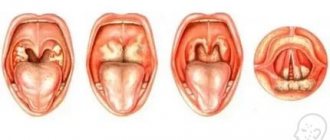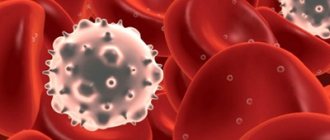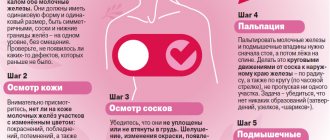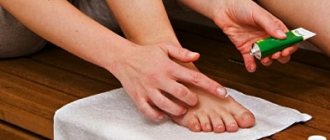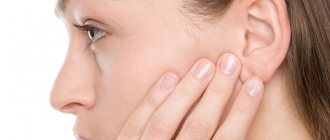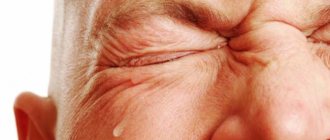Fungal external otitis is successfully treated in ENT clinic No. 1
Author:
- Golonova Yulia Yurievna
otorhinolaryngologist, clinic director
4.33 (Votes: 3)
The problem of fungal infection of the external auditory canal (otomycosis) is growing every decade. This is due to the problem of decreased immunity, frequent and uncontrolled use of antibiotic therapy, and the dietary habits of modern humans, who consume large quantities of food rich in carbohydrates, often leading to type 2 diabetes mellitus and increased blood glucose levels. All these reasons lead to an increased risk of developing fungal infections, including in the ear canal.
If we add to the overall picture the bad habit of “cleaning” or “scratching” the ears with all available objects, naturally non-sterile (including the so-called “ear” sticks, which are also non-sterile), which helps remove the natural protective factor from the ear canal - earwax and contaminated with all conceivable and inconceivable bacterial and fungal microflora - we get ideal soil for the formation of otomycosis.
How does pathology manifest itself?
Local signs of the disease:
- discharge from the ear (greenish or black);
- itching in the ear canal;
- pain in the ears (also localized behind the ears, radiating to the head);
- tinnitus (ringing in the ears);
- dizziness;
- hearing impairment.
If your ears are blocked, then you may be talking about damage to the eardrum.
We recommend reading: Tests for fungus: how to take tests and how much they cost
At the same time, general symptoms of infectious inflammation are present: increased temperature and muscle aches. Headaches are observed, the nature of which varies from aching to acute.
Additional signs also appear that depend on the type of fungus:
| View | Symptoms of ear fungus |
| Mold | Reduced lumen of the ear canal, greenish, gray, or gray-black discharge. The plaque that forms on the walls is difficult to clean off. After removing it, bleeding areas remain on the surface. The inflammation spreads to the eardrum. Against the background of infiltration, myringitis develops. |
| Yeast fungus | The middle ear is affected. The discharge looks more like earwax. Their hue is yellowish. There is a liquid coating that spreads over the entire surface of the skin of the ears. As it dries, films and crusts appear. If myringitis occurs, the area of the eardrum turns red and erosions form. Swelling appears, which forms a protrusion. It gives the impression of perforation. |
In 90% of cases, the lesion is 1-sided. Infection in both ears is extremely rare.
How is pathology diagnosed?
There is a method that allows you to independently determine the presence of fungus in the ears. To do this, carefully insert a paper napkin there.
If moisture or color appears on the turunda, this indicates the beginning of the development of a pathological process.
General clinical and special studies help detect the disease. First, the patient is sent for a urine and blood test.
Then he is recommended to pass:
- bacteriological research. The main task is to identify fungal colonies;
- microscopic examination, which involves the detection of fungal spores and mycelium threads in the material being examined.
To identify etiopathogenetic factors in the development of recurrent otomycosis, the patient is recommended to consult an immunologist and an endocrinologist.
Otomycosis: when fungi grow in the ears
When mentioning fungal diseases in humans, most of us will probably only remember nail fungus or thrush. But it turns out that there are also mushrooms that grow in the ears and cause a lot of trouble to a person. The pathological process caused by fungi in the ears is called otomycosis.
What is fungal otitis and how does it happen?
Otomycosis is a disease of various parts of the ear, which is caused by certain types of mold and yeast-like fungi. Most often, the causative agent of the pathological process is fungi from the genus Aspergillus
and
Candida
.
Otomycosis is a kind of collective concept that indicates the fungal nature of ear pathology. The specific name of the disease depends on which part of the ear is affected: if the auricle and skin of the external auditory canal are involved in the pathological process, this is fungal external otitis; if the process spreads to the eardrum, they speak of fungal myringitis; if the tympanic cavity (middle ear) is affected, then it is fungal otitis media.
What causes otomycosis?
As a rule, those fungi that cause otomycosis are classified as opportunistic, i.e. they cause the disease only if there are predisposing factors. Factors that increase the risk of otomycosis include:
- injuries to the skin of the auricle and auditory tube (most often due to improper hygiene of the outer ear, the use of cotton swabs, as well as allergic diseases accompanied by itching and scratching), which increase the risk of the fungus penetrating the skin and opening the gates of infection;
- existing inflammatory diseases of the ear, since local immunity is significantly reduced;
- fungal infection of other localizations, for example, fungus of the nail plate, foot, thrush, etc. Most often, a fungal infection manifests itself against the background of decreased immunity and changes in the composition of the skin microflora. Disturbances occur throughout the body, so if a fungal infection appears in one place, there is a chance that it will manifest itself somewhere else;
- diabetes mellitus - sugar, the content of which in earwax increases significantly during this disease, is a good nutrient medium for fungi and promotes their growth;
- concomitant chronic diseases that lead to a decrease in the body’s overall resistance;
- taking antibiotics, glucocorticosteroids, cytostatics - long-term and irrational use of these drugs leads to changes in the normal composition of the skin microflora and the development of pathogenic microorganisms.
Symptoms of the disease
Most often, otomycosis affects the ear on only one side. Manifestations of the disease depend on which part of the ear is affected. The common feature is the gradual onset of the disease and the progression of symptoms as the mycelium of the fungus grows into the thickness of the skin.
For external otomycosis
The disease begins with swelling of the external auditory canal, gradually accompanied by itching, pain, and a feeling of ear congestion. Later, discharge from the external auditory canal appears. The nature of the discharge depends on the type of fungus: with candidiasis, it is a liquid, cheesy discharge, often white or yellowish in color; with aspergillosis, it is a thick discharge, ranging in color from green to gray-black.
Main types of fungus
The types of ear fungus are presented in the table:
| Classification by localization | Classification by duration | Classification by shape |
| Postoperative otitis media; otitis externa (external ear); otitis media, myringitis (inflammatory process affecting the eardrum). | Acute (manifests within 4-5 weeks); subacute (1-6 months), chronic (from six months). | Blastomycosis; Candidiasis; cryptococcosis; aspergillosis; coccidioidosis; mucodiosis. |
The inner ear is affected in 5-7% of cases.
If a pathogenic bacterium joins the “fungal” pests, mixed otomycosis is diagnosed.
Classification of otomycosis
Ear fungus is classified depending on the location of the disease and its intensity.
External otomycosis
External otomycosis of the ear is the most common type of this disease. At the beginning of its development, narrowing and inflammation of the ear canal occurs, the fatty film on the skin disappears, and small discharge appears.
The acute phase of the disease is characterized by the appearance of pain, an increase in the volume of discharge, and a significant increase in swelling. The patient practically loses his hearing and suffers from constant noise in the ear. The disease can be complicated by inflammation of regional lymph nodes.
It is necessary to treat ear fungus urgently, so when the first symptoms appear, you should contact a specialist in the field of otolaryngology.
Mycotic otitis media
Often, it is purulent otitis media that is complicated by a fungal infection. The patient's hearing is significantly reduced, the secretion of exudate increases, severe pain, congestion and noise in the ears appears, the temperature rises, pain in the lymph nodes may occur
Fungal myringitis
Myringitis is an ear disease accompanied by dysfunction of the eardrum, hyperemia and swelling.
Otomycosis of the postoperative cavity
The ears may develop fungal infections after surgery due to regular treatment with medications such as antibiotics and corticosteroids, as well as an imbalance in the immune system after surgery.
Where does ear fungus come from in humans?
It is provoked by molds Aspergillus and Penicillum, as well as fungi of the genus Candida.
Main provoking factors:
- using someone else's headphones and earplugs;
- mechanical damage to the ears;
- frequent stress;
- ear dysbiosis;
- development of hyperhidrosis;
- weak immune system;
- poor ear hygiene;
- chronic allergies (including “hay fever”);
- narrowness of the ear canal;
- frequent and improper ear rinsing;
- dermatitis;
- endocrine pathologies;
- prolonged and uncontrolled use of antibiotics and hormones;
- inflammatory pathologies of the ears.
The risk group includes people who use hearing aids, are professional swimmers, and have had a mastoidotomy.
Major complications
In the absence of timely treatment, serious consequences develop:
- hearing loss (develops against the background of chronic otomycosis);
- extensive damage to the ear canal, eardrum, and tissues that surround the ears;
- the formation of adhesions that impede the normal perception of sound.
Also, fungus in the ears is dangerous for the development of complicated forms of otitis media or labyrinthitis. These conditions require urgent hospitalization of the patient.
Otomycosis - symptoms and treatment
Questioning, anamnesis collection
Diagnosis begins with collecting anamnesis. The doctor asks a series of questions:
- When did the disease begin and how did it progress?
- Has the patient previously had otitis media?
- Was there a fungal infection of other organs and systems, for example the urogenital tract.
- How long has the patient been sick, with what frequency, have there been any exacerbations.
- Does the patient take antibiotics, steroid drugs, cytostatics (most often used in the treatment of cancer) and chemotherapy drugs.
- Does the patient suffer from allergies [2][3].
- Are there any unfavorable factors in everyday life and work?
- What concomitant diseases did the patient have?
- Are there chronic infections [6].
Inspection, evaluation of complaints
When it comes to candidiasis , patients complain of whitish discharge from the ear with a cheesy consistency. During otoscopy, narrowing of the ear canal in the cartilaginous part and hyperemia (redness) of the eardrum are observed [6][11].
With aspergillus infection, the discharge is dark, almost black, and has a thick consistency. During otoscopy, narrowings in the bony part of the ear canal are observed, the eardrum may bulge and lose its identification marks [13][15].
With penicilliosis , the itching is more pronounced, the discharge resembles liquid earwax, the cartilaginous area is infiltrated, and protrusion, hyperemia or erosion may be observed on the eardrum, which falsely indicates perforation (through damage).
If we talk about mycosis of the middle ear and postoperative cavity , the main complaints are decreased hearing, discharge from the ear, periodic itching, and dizziness may also be observed [9].
As a rule, with any form of fungal infection of the outer ear, hearing is not affected or minor disturbances such as sound conduction are detected: the transmission of sound waves through the auditory canal to the middle ear deteriorates. In this case, a feeling of ear congestion occurs. Symptoms such as pain and itching can occur with any type of fungal infection [3][6][20].
Some patients in the acute period complain of headache on the affected side, increased body temperature up to 38 °C, hypersensitivity of the auricle, external auditory canal and postauricular area [6].
Laboratory diagnostics
Of the laboratory research methods, the main one is taking a smear from the ear and its mycological inoculation on special nutrient media (Saburo, Chapek, etc.). The specialist takes samples using an ATIC attic probe or a Volkmann spoon. The material is taken under visual control so as not to damage the eardrum, since the substrate is collected from the deep parts of the ear canal [12].
In addition to mycological seeding of the collected material, its microscopy using 10% potassium hydroxide, if it is native material. Sometimes Romanovsky-Giemsa staining is performed. These 2 studies together make it possible to accurately determine the causative agent of the process. To diagnose mycosis, the culture titer (amount in 1 ml) must be at least 104 CFU/ml.
A number of general clinical studies are also carried out, such as clinical and biochemical blood tests to determine the level of glucose, total protein, AST (aspartate aminotransferase), ALT (alanine aminotransferase) and creatinine. A blood test is performed for syphilis, HIV infection and hepatitis in order to exclude these diseases and identify concomitant pathologies [9].
Instrumental diagnostics
otomicroscopy of the diseased ear using binocular lenses, microscopic optics or an endoscope should be highlighted
Differential diagnosis
Differential diagnosis must be made with inflammatory processes of the outer and middle ear of non-fungal etiology (for example, with bacterial or viral otitis media and externa), with cerumen plugs and ear tumors, such as cholesteatoma.
The final diagnosis of otomycosis can only be made with a comprehensive mycological study [9][11].
How is the disease treated?
Treatment for ear fungus is prescribed by a doctor after a comprehensive examination.
At the clinic, the specialist does the following:
- Toilet the external auditory canal. The ears are thoroughly cleaned of pathological contents.
- Performs ultrasonic medicinal irrigation of the ears. The fungus is very afraid of ultrasound and dies after 2-3 sessions.
- Inserts medicinal turunda into the ears.
- Conducts physiotherapeutic treatment. Sessions of laser treatment (relieves inflammation and swelling), vibroacoustic therapy (improves microcirculation and lymphatic drainage), as well as ultraviolet irradiation procedures (sterilizes the mucous membrane of the ears from fungal flora) are recommended.
At home, it is recommended to use antifungal medications.
Clinical picture
Among the main symptoms of otomycosis are: itching in the ear, as well as its congestion and noise, increased sensitivity of the auricle and ear canal. Outside the period of exacerbation, pain in the ear, as well as in the head on the affected side, is mild. When performing otomicroscopy, a narrowing of the external auditory canal is observed due to skin infiltration. The walls of the ear canal are somewhat hyperemic (reddened). The pathological discharge is very similar to wet blotting paper, and its color depends on the color of the mycelium. If the infection was caused by the fungi Aspergillus niger, the discharge will be black-brown, and if the infection involved the fungi Aspergillus flavus, Aspergllus graneus, then it will be greenish or yellowish.
Features of non-drug treatment
How to cure fungus in adults? First, the doctor must remove fungal plaque from the ears. The procedure is performed only in the clinic. It involves the use of an attic probe, as well as a quilted pad, which is moistened in an antimycotic solution.
Washing features:
- external mycotic otitis – the anterior inferior part of the auditory canal is cleaned;
- mycotic otitis media - washing the eardrum with antiseptics with antifungal effects (quinoline alcohol (0.1%) and miramistin solution are used).
Drug therapy
How to treat fungus? Features of drug therapy depend on the type of pathology:
- otitis externa Local medications are prescribed;
- candidal external otitis. A combination of 1% clotrimazole solution and 1% naftifine solution is recommended. Applications are prescribed, the duration of which varies from 5 to 10 minutes. Duration of therapy – 1-2 weeks, 2 times/24 hours;
- candidomycosis. The use of oxiconazole, econazole, natamycin, miconazole, bifonazole is recommended;
- external otitis caused by mold fungi. A solution of naphthyzine and chloronitrophenol is used;
- yeast infection. The use of fluconazole for fungus is recommended.
Fluconazole should not be used to treat mold mycosis.
Treatment regimen
Information on how to properly use medications for fungus in a person’s ears is presented in the table:
| Localization | Yeast-like fungi | Molds |
| Outer ear | Naftifine 1% solution + clotrimazole 1% solution (topically). | Naftifine 1% solution + chloronitrophenol 1% solution (topically). |
| Postoperative cavity | Naftifine 1% solution + clotrimazole 1% solution (topically), Fluconazole, capsules (orally). | Naftifine 1% solution + chloronitrophenol 1% solution (topically), Itraconazole, capsules or terbinafine, tablets (orally). |
| Middle ear | Naftifine 1% solution + clotrimazole 1% solution (topically), Fluconazole, capsules (orally). | Naftifine 1% solution + chloronitrophenol 1% solution (topically), Itraconazole, capsules (orally). |
Ointments, creams and drops
The best topical remedies for ear fungus are:
| Means | Description | How much does it cost (RUB) |
| Exoderil | This is an ointment for ear fungus. Effect: fungicidal, fungistatic, antifungal. | From 210 |
| Nitrofungin | Effective against fungi Trichophyton gypseum and Microsporum canis, Candida albicans. | 276 |
| Iodinol | Which drops help best? It is recommended to use Iodinol. The main effect is antiseptic. | From 230 |
| Candibiotic | Drops in the ears. Effects - antibacterial, antifungal, anti-inflammatory, analgesic. | 300-500 |
| Travocort | Anti-inflammatory, analgesic, antifungal. | 750-950 |
| Pimafukort | This is a cream for fungus. The main effect is anti-inflammatory. Helps cope with yeast-like fungi. | 510-610 |
We recommend reading: How to remove fungus from the body using folk remedies
The use of folk remedies
Allowed use:
- aloe juice (drip 5 drops, three times/24 hours, for 7 days);
- warm decoction of celandine (5 drops, twice/24 hours);
- fresh onion juice (5 drops, before lights out, for 1 week).
Washing with boric acid is also allowed.
Folk remedies can only be used after consultation with your doctor!
You can also use hydrogen peroxide at home.
The recipe looks like this:
- Pour ¼ liter of water into a glass (temperature – 37 degrees).
- Add 10 drops of hydrogen peroxide (3%).
- Fill a small syringe with the solution (optimally 2 cubes).
The resulting solution is used to rinse the ears.
How to treat children
A fungus in a child’s ear is treated in the same way as in an adult: cleaning out the pathological contents and using medication.
Typically, children are diagnosed with ear mycosis caused by Candida. During therapy, the doctor prescribes weekly use of clortimazole.
After the symptoms of inflammation have been relieved, the use of ointments that restore the skin of the ear canal is allowed. "Radevit" helps a lot. It has dermatoprotective, regenerating and antipruritic effects.
We recommend reading - Why does the fungus “love” pregnant women? (treatment and prevention)
What are the contraindications?
It is strictly not recommended to instill alcohol-containing medications into the external auditory canal - this leads to irritation. If the drug gets on the mucous membrane of the eardrum during otitis media, severe pain occurs. Additional complications:
- the appearance of granulations;
- swelling of the mucous membrane;
- strengthening of the clinical picture of mucositis.
Another common mistake is incorrect selection of medication.
If local therapy is carried out, then the use of only one type of antifungal drugs is not enough. In the proposed combination, one of the agents has a pronounced fungicidal effect, the other is more fungistatic.
What to do if you suspect fungal otitis media?
First of all, immediately contact a specialized ENT clinic or ENT office. In Moscow, for example, at ENT clinic number 1, where an otorhinolaryngologist will conduct an endoscopic examination of the ear, to clarify the diagnosis, take discharge from the ear (smear) for fungi and prescribe complex therapy for this disease, which includes local therapy, general therapy and physical therapy.
One of the important elements of treatment is washing the ear canal with a medicinal solution in order to remove fungal mycelium and inflammatory discharge, after which ointment or drops that have a therapeutic effect are introduced onto the turunda, it is necessary for the medicine to act on the cleaned ear canal.
Red laser laser therapy is very effective for antifungal, anti-inflammatory and immune-modeling effects. The course of such treatment is 8-10 procedures.
After a course of complex therapy, it is recommended to give up the bad habit of “cleaning” your ears in order to allow earwax to protect you from such diseases in the future.
Preventive actions
The main measures to prevent ear fungus should be aimed at eliminating those factors that are important in the pathogenesis of the disease:
- undergoing restorative therapy;
- maintaining ear hygiene;
- undergoing restorative therapy;
- correct toilet of the external auditory canal;
- taking corticosteroids and antibacterial drugs as prescribed;
- correction of the glycemic profile.
For 1-1.5 months, 1 time/7 days, it is necessary to lubricate the skin of the external auditory canal with antifungal drugs.
Causes and course of the disease
Otomycosis is caused by yeast-like fungi of the genus Candida, as well as molds Aspergillus, Penicillium, and Rhizopus. The main factors that contribute to the occurrence and development of this disease are:
- Chronic otitis media, as well as diseases of the external auditory canal such as eczema and dermatitis;
- Skin microtraumas;
- Long-term use of hormones or antibiotics;
- Metabolic disorders and allergies;
- Special working conditions - work in a wardrobe, at a collection point for old things, or as a procurer of waste materials.
Another factor that contributes to the development of fungal pathology can be considered the structural features of the external auditory canal. In this case, the mushroom is protected from direct sunlight, which is detrimental to it. High humidity and optimal temperature, the absence of mechanical damage to the mycelium allow the fungus to multiply intensively. As a result, they form dense plexuses of mycelium, and this causes inflammation of the skin.
If mold otomycosis is caused by fungi of the genus Penicillium, then a serous discharge is observed in the external auditory canal, which is odorless and has a liquid consistency. Throughout the entire external auditory canal, soft crusts are observed, which have a yellowish-whitish color with black heads and are quite easily removed. Their greatest accumulation is detected on the eardrum and in the bony part of the auditory canal cavity.
The clinical picture of otocomycosis caused by yeast-like fungi of the genus Candida is very similar to weeping eczema of the outer ear. In this case, the pathological discharge may take the form of whitish-yellowish crusts or caseous masses of a whitish color and soft consistency that close the lumen of the ear canal. In the case of the development of candiomycosis, the process often involves the area behind the ear and the auricle.
Friends! Timely and correct treatment will ensure you a speedy recovery!
What does ear fungus look like?
During the acute stage, a large amount of discharge appears from the ears. The color of the discharge varies depending on the type of pathogen.
If the provocateur is a mold fungus, then the exudate is presented in the form of caseous masses, which are somewhat reminiscent of wet paper. The color of the discharge is green-yellow, black-gray, brownish.
We recommend reading - Forewarned is forearmed! Which mold is the most dangerous?
Treatment
First, you need to clean the ear canal with a warm solution of boric acid or potassium permanganate. After this procedure, you can use antifungal drugs, which are selected depending on the type of fungus. Fungal masses are afraid of ultrasonic vibrations and laser exposure, so these methods of physiotherapeutic treatment must be connected to the main treatment.
Reviews
Real reviews of people who treated ear fungus with drugs:
Marina: After pregnancy I suffered from otomycosis. It was very painful, my ears were very itchy. On the advice of a doctor, I used Nitrofungin. I applied the product to a cotton swab and carefully lubricated the ear canal. There were no side effects other than minor irritation. The itching began to go away after 2 days, the pain began to subside after the first use.
Alina: I used Candibiotic. Very effective, inexpensive product, shelf life - 2 years. The disadvantage is that the pipette is inconvenient.
